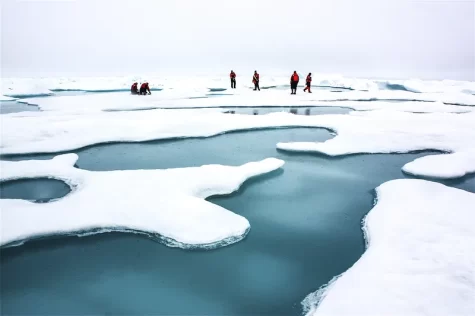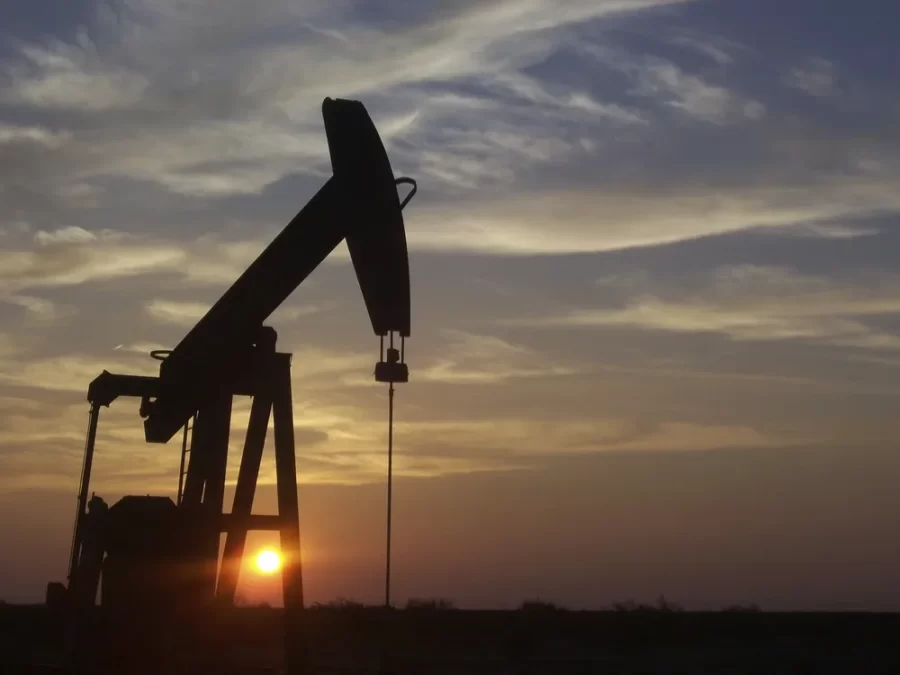The Willow Project Creates Controversy
An oil drill offshore, one of the 201 in the world.
May 8, 2023
The Willow Project, a controversial environmental undertaking approved by the Biden administration on March 13th, has caused a profound uproar among various groups. The project is a proposal to drill for oil in Alaska and is presently the largest proposed oil project on U.S. federal land, spearheaded by ConocoPhillips, a leading petroleum company that seeks to tap into Alaska’s petroleum reserve. With an estimated cost of $8 billion, the project will cover approximately 23 million acres of the Beaufort Sea, located to the north of the Arctic Circle. According to npr.org, the company intends to extract 180,000 barrels of oil per day.

The approval of the Willow Project elicited an immediate backlash on social media, with many big influencers on platforms such as TikTok making videos with the hashtag #StopWillow. People called out the Biden administration for its purported commitment to combat the climate crisis while still sanctioning the Willow Project.
Environmentalists promptly filed multiple lawsuits, with one Alaskan native group describing the project as a “carbon bomb.” More than 4.6 million people signed petitions against the project’s national approval. As a result of the widespread public outrage, the project was scaled back by a significant margin. Only three of the five drilling sites proposed by ConocoPhilips were passed, reducing the size of the original project by approximately 40%, according to USA Today. The Biden team defended the project’s approval citing legal constraints since the land leases were decades old and ConocoPhillips had valid rights to the land.
“Drilling in new areas in the north slope of Alaska will have negative environmental impacts. Those areas are calving grounds for native caribou among countless other bird species. Oil drilling is heavy industry, noise, lights and equipment will be a constant presence there. The infrastructure to support the drilling pads will mostly be ice roads, that in time will melt away,” science teacher Paul Tschuor said. “That impact should be minimal in time, the drilling pads will not be something that will go away in any short amount of time. The Alaskan pipeline has been controversial for years, but it’s there and will be utilized to transport the oil to the lower 48. If the pipeline is dismantled, which is what will happen as those oil fields are used up, then it would never be feasible to drill in that area again. We’re all hypocritical in this. We want nature left alone but also expect to have energy at reasonable rates. You can’t have it both ways. That doesn’t even get into the conversation of climate change and our continued use of fossil fuels which will continue to increase that threat.”
Although the Willow Project has faced vehement opposition, many Alaskan officials widely support it, citing an estimated 1,000 new jobs that it could create in the region, including 400 permanent positions. Alaska’s current oil revenue provides approximately one third of the state’s annual budget, and this project could translate into a significant financial boost for communities in the area.
Furthermore, in the wake of the ongoing war in Ukraine and Russia’s role in the conflict, many people believe that the U.S. needs to adopt a more independent approach to gas and oil production to reduce reliance on other countries. However, this argument may come at a high environmental cost, as the drilling site is home to half a million caribou and millions of migratory birds that use the area as nesting grounds.
Additionally, the proposed drilling site is the largest expanse of undisturbed land in the United States. Furthermore, this area of Alaska is already suffering from coastal erosion, melting sea ice, and thawing permafrost, which may be exacerbated by the drilling and extraction of oil. Carbon emissions from the burning of fossil fuels contribute significantly to global warming, and scientists have identified a tipping point of 1.5 degrees, after which the environmental effects could be devastating, including rising sea levels, extreme heat waves, and potential deaths worldwide, according to NRDC.org. The Willow Project, if executed, will release 9.2 million metric tons of carbon pollution, equivalent to the pollution generated by two million gas-powered cars.
The Willow project will necessitate the building of hundreds of miles of roads and infrastructure, which could have a further negative impact on the environment. Estimates suggest that it could result in the loss of 531 acres of wetlands, 619 acres of habitat disturbance for polar bears, and more than 17,000 acres of disturbance for birds.
As of right now, lawsuits carry on against the project, but according to CNN, a federal judge in Alaska has declined to block progress on the project, and it is still set to carry on as of April 4, 2023. There are still ongoing petitions like this one which you can fill out to bring attention to the government.



